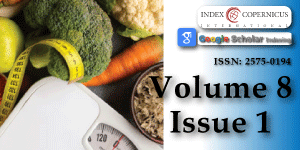Agriculture High-Quality Development and Nutrition
Main Article Content
Abstract
Modern Agricultural production wants to efficiently produce plant products and benefits to meet people's needs. However, because of better plant species and varieties, overuse of fertilizer and overdose of pesticide alters the plant resources relationship, resulting in soil degradation, vegetation decline, and crop failure or waste of resources, which influence the quality of fruit and benefit and are unfavorable for the sustainable utilization of nature resources and crops high-quality development. After a couple of years of study, the results showed that Agricultural development went into agricultural high-quality development in 2017, which is to use effective measures or methods to maximize yield and benefits and meet the need of people's need for better Agricultural produce and a better life. The theory foundation of the sustainable utilization of natural resources and Agriculture high-quality production is the resources use limit by plants, vegetation carrying capacity, and critical period of plant resources relationship regulation. The methods of Agriculture high-quality development are to select excellent plant species or varieties based on site conditions and market needs before planting crop young plants and sowing seeds, adopt appropriate initial planting density when planting crop young plants and sowing seeds, and regulate the relationship between plant growth and resources need in the process of crop production in a timely and appropriate amount, especially the chemical fertilizer and pesticide to obtain the maximum yield and benefits and realize the sustainable utilization of natural resources and achieve agricultural high-quality development.
Article Details
Copyright (c) 2024 Guo Z.

This work is licensed under a Creative Commons Attribution 4.0 International License.
Squalli J, Adamkiewicz G. The spatial distribution of agricultural emissions in the United States: The role of organic farming in mitigating climate change. J Clean Prod. 2023;414:137678. DOI: 10.1016/j.jclepro.2023.137678. Available from: https://doi.org/10.1016/j.jclepro.2023.137678
Guo Z. An approach to the method for optimal cutting rate for the headwater conservation forest. In: Yu Y, Zhang J, editors. Protection and Mountain Forest. Beijing: Science Press; 1994; 1990.
Guo Z, Shao M, Zhang Y, Wu Q. A layer-dividing approach to the soil water in forest land. In: Shao M, editor. Proceedings of Soil Physics and Ecological Environmental Construction. Xi'an: Shanxi Science and Technology Press; 2002; 74-79. Available from: http://ir.igsnrr.ac.cn/handle/311030/4789
Guo Z, Shao M. Vegetation carrying capacity of soil water and soil desiccation in artificial forestry and grassland in the semiarid regions of Loess Plateau. Chin J Ecol. 2003;23:1640-1647.
Guo Z, Shao M. Mathematical model for determining vegetation carrying capacity of soil water. J Hydr. 2004;35(10):95–99. Available from: https://www.semanticscholar.org/paper/Mathematical-model-for-determining-vegetation-of-Guo/9c7f6fb57c9c0daf5dae8a7eb6e1106ddfdc35db
Guo Z, Li Y. Initiation stage to regulate the Caragana growth and soil water in the semiarid area of Loess Hilly Region, China. Chin J Ecol. 2009;29:5721-5723. Available from: https://www.researchgate.net/publication/286514133_Initiation_stage_to_regulate_the_caragana_growth_and_soil_water_in_the_semiarid_area_of_Loess_Hilly_Region_China
Guo Z. Limit of vegetation rehabilitation for soil and water conservation in semi-arid region of Loess Plateau. Chin J Sci Soil Water Conserv. 2009;7:49-54.
Guo Z, Shao M. Effect of artificial Caragana (Caragana korshinskii) forest on soil water in the semiarid area of Loess Hilly Region. Chin Forest Sci. 2010;46:1-8.
Guo Z. Theory and practice on soil water carrying capacity for vegetation. Beijing: Scientific Press; 2014; 45-100.
Guo Z. Estimating method of maximum infiltration depth and soil water supply. Sci Rep. 2020;10:9726. Available from: https://www.nature.com/articles/s41598-020-66859-0
Guo ZS. Soil water carrying capacity for vegetation. Land Degrad Dev. 2021;1–11. Available from: https://doi.org/10.1002/ldr.3950
Guo Z. High-quality development of agriculture. Encyclopedic Forum. 2022;(01):64-66.
Guo Z. Forest restoration, resource sustainable use, and high-quality sustainable management. Glob J Ecol. 2023;8(1):007-010. Available from: http://dx.doi.org/10.17352/gje.000075
Guo Z. Soil water resource use limit in semi-arid loess hilly areas. Chin J Appl Ecol. 2010;21:3029-3035. Available from: https://www.researchgate.net/publication/50890123_Soil_water_resource_use_limit_in_semi-arid_loess_hilly_area
Guo ZS. Soil hydrology process and sustainable use of soil water resources in desert regions. Water. 2021;13:2377. Available from: https://www.preprints.org/manuscript/202106.0159/v1
Guo Z. High-quality production of food plants. Biomed J Sci Tech Res. 2023;53(4):44856-44863. Available from: https://biomedres.us/pdfs/BJSTR.MS.ID.008422.pdf
Gui Y, Wang Y, He S, Yang J. Self-powered smart agriculture real-time sensing device based on hybrid wind energy harvesting triboelectric-electromagnetic nanogenerator. Energy Convers Manag. 2022;269:116098. Available from: https://doi.org/10.1016/j.enconman.2022.116098
Guo Z, Shao M. Impact of afforestation density on soil and water conservation of the semiarid Loess Plateau. J Soil Water Conserv. 2013;68:401-410. Available from: https://www.jswconline.org/content/68/5/401
Guo Z, Zhang W. Impact of initial planting density on soil water resource use limit by plants. Geoinfor Geostat: An Overview. 2016;4:1. Available from: https://www.scitechnol.com/peer-review/impact-of-initial-planting-density-on-soil-water-resource-use-limit-by-plants-IGZq.php?article_id=4642
Guo Z. A review of soil water carrying capacity for vegetation in water-limited regions. Chin J Forest Sci. 2011;47(5):140-144.
Guo Z. Rice carrying capacity and sustainable production of rice in resource-limited regions. Int J Agric Sci Food Technol. 2019;5(1):054-057. Available from: http://dx.doi.org/10.17352/2455-815X.000042





